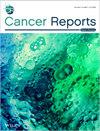Clinical Characteristics of SARS-COV-2 Omicron Variant in Acute Myeloid Leukemia and Acute Lymphocytic Leukemia Patients: A Multi-Center Retrospective Study
Abstract
Background
The death rate of hematological malignancies is high, and the death rate of patients with COVID-19 infection is further increased. Although there have been expert consensus and relevant guidelines to introduce the recommendations of the guidelines for patients with hematological malignancies complicated with COVID-19 infection, there is limited understanding of the clinical characteristics of Chinese patients with acute leukemia complicated with COVID-19 infection.
Aims
This study aimed to analyze the clinical manifestations, mortality, and determinants of viral shedding duration in Chinese AL patients infected with COVID-19.
Methods
We conducted a retrospective study of 100 AL patients with COVID-19 infection in Henan Province, China, from December 1, 2022, to January 31, 2023. Data on demographics, leukemia subtype, symptoms, treatments (antibiotics/antivirals), and viral shedding duration were collected. Follow-up was conducted over three months to assess mortality. Univariate and multivariate analyses were performed to identify risk factors.
Results
The median age was 49.5 years (58% male, 42% female), with 76% having acute myeloid leukemia (AML) and 24% acute lymphoblastic leukemia (ALL). Most patients (86%) were asymptomatic. Antibiotics and antivirals were administered to 35% and 25% of patients, respectively. Severe cases and fatalities exhibited prolonged viral shedding. Neutropenic patients on antibiotics had significantly extended shedding duration, whereas antiviral therapy or delayed primary disease management shortened it. The overall mortality rate was 6%. Univariate analysis identified neutropenia as a key mortality risk factor, though multivariate analysis showed no significant associations.
Conclusion
Early antiviral treatment may reduce viral shedding duration and potentially mitigate symptom severity and mortality in AL patients with COVID-19. Neutropenia emerged as a critical factor influencing outcomes. These findings underscore the importance of tailored therapeutic strategies for this high-risk population.


 求助内容:
求助内容: 应助结果提醒方式:
应助结果提醒方式:


